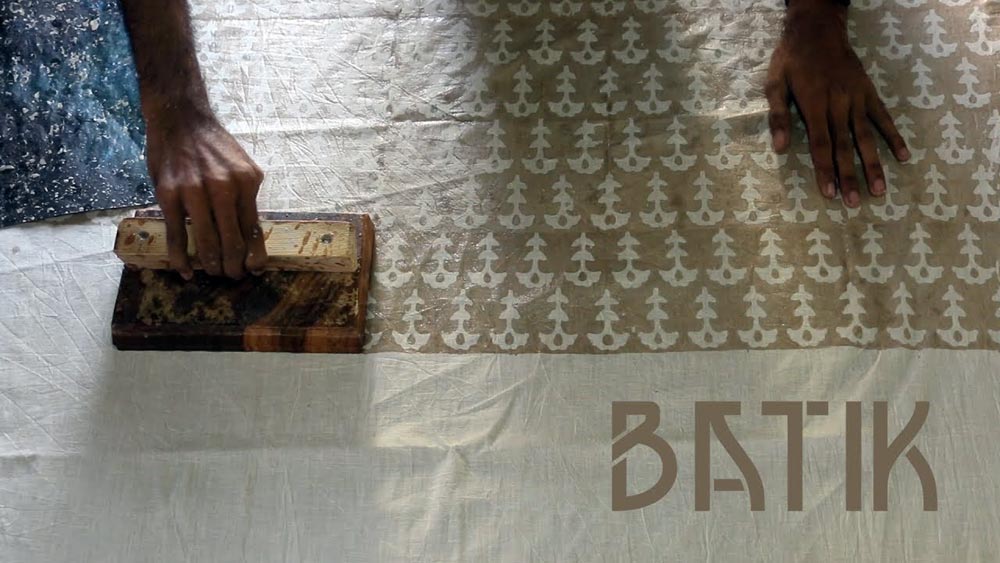Originally, Batik prints were made by dipping a block into hot piloo seed oil, which was then pressed onto fabric. After dyeing, the oil paste was peeled off to reveal a print. Over time, wax was adopted in the technical process of Batik printing as a more practical alternative to oil, which had to be pressed from thousands of small seeds. The adoption of wax changed the appearance of the textile. In wax printing, thin webs of dye run through the motif creating a beautiful veined appearance. Wax print batik flourished in Kachchh in the 1960’s due to the crafts rising popularity in foreign markets coinciding with the hippie movement and the emergence of chemical dyes, which worked in tandem with wax printing in contrast with vegetable dyes that were unfit for Batik making.
Local legends share stories of the Batik practice of block printing being carried to Kachchh during the time of the Ramayana by seasoned, master craftsmen. For years, people have enjoyed the floral and figural motifs of Batik textiles by Khatris, a community creating Batik, Ajrakh, Bagru and Bandhani all over Kachchh. The port of Mandvi is one reason Batik probably became a main industry in Kachchh. It was a popular textile export to Indonesia from Gujarat as early as the 1500’s. Indonesian populations were particularly fond of the Gujarati madder, a deep red colored dye that was meaningful to their community.
Kutch has long been an established centre for Batik, a wax resist dyeing and block printing craft also practiced in Indonesia among some other cultures. A majority of Batik artisans in Kutch — if not almost every single one — are Khatris; Kutchi-speaking Muslims.



